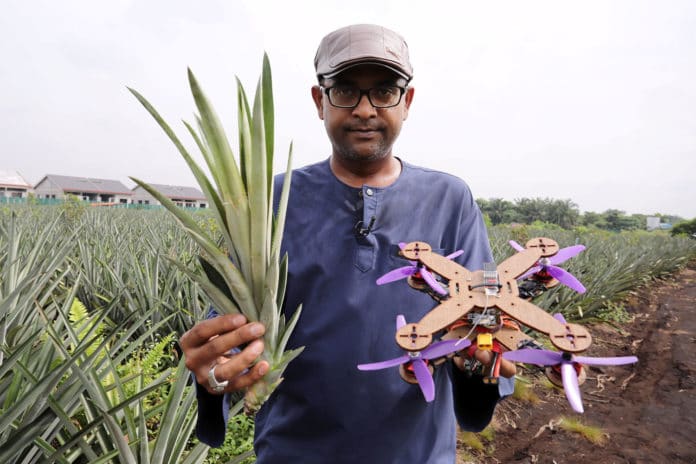The pineapple plant only fruits once in its lifetime. After pineapple fruits are harvested, the leaves often go to the waste, which later on are disposed of by natural decomposition or burning, which can cause air pollution. Selling the waste instead would increase the farmer’s income, lead to significant waste reduction, thereby reducing the environmental impact.
Now, Malaysian researchers have developed a method to turn fiber found in normally discarded pineapple leaves into material sturdy enough to make drone frames.
According to the lead researcher Mohamed Thariq Hameed Sultan at Malaysia’s Putra University, the drones made of bio-composite material (pineapple leaves) had a higher strength-to-weight ratio than frames made with synthetic fibers and were also cheaper, lighter, and easier to dispose of. According to the researchers, if the drone gets damaged, the frame can be buried in the ground, and the bio-composite material will degrade within two weeks.
The prototype drones have flown to around 1,000 meters and can stay aloft for about 20 minutes. The team aims to make larger drones out of this sustainable material that can accommodate a greater payload for agricultural purposes and aerial surveillance.
The project was launched in 2017 to find ways to use pineapple waste sustainably. “We are transforming the leaf of the pineapple into a fiber that can be used for aerospace application, basically inventing a drone,” Mohamed Thariq told Reuters.
The project to develop drones with pineapple leaves fiber promises to encourage innovation and creativity to find ways to utilize waste while increasing income for farmers, especially when their income was uncertain due to the COVID-19 pandemic.
